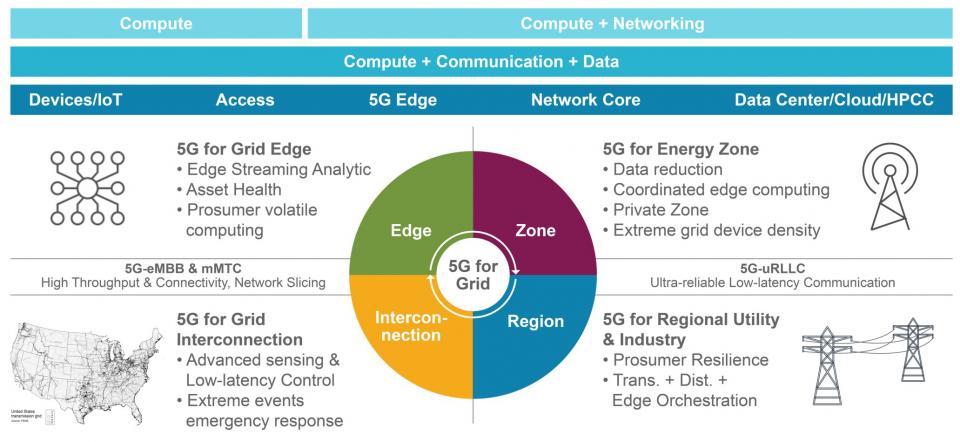5G Energy FRAME Capabilities
Approaches
The ultimate goal of 5G Energy FRAME (Fabricated Resource and Asset Management Encompassment) is to break data silos across the energy sector. Embracing 5G technologies will bridge the gap between energy stakeholders and computing/ML resources to enhance energy infrastructure asset management through cohesive data integration and intelligent analytics.
From the decarbonized power grid perspective, it is important to develop this macro yet holistic view of new computing and 5G communication applications. In particular, the interdependency and interactions among energy, computing and communication should be considered, which are the core of societal and economical infrastructure systems. 5G is an opportunity to rethink the paradigm of infrastructure planning, as computing will be one of the core services for society besides electricity and communication services.

There are various levels of potential computing/learning applications in the 5G fabricated sensing and control infrastructure, including:
- edge
- edge-based energy zone
- region
- interconnection levels.
Different energy stakeholders may have different capabilities and needs regarding energy, communication/sensing, and computing services. There are emerging needs for the effective orchestration of energy domain computation at these levels:
- distributed computing/learning
- cloud-based computing
- large-scale, high-performance computing resources